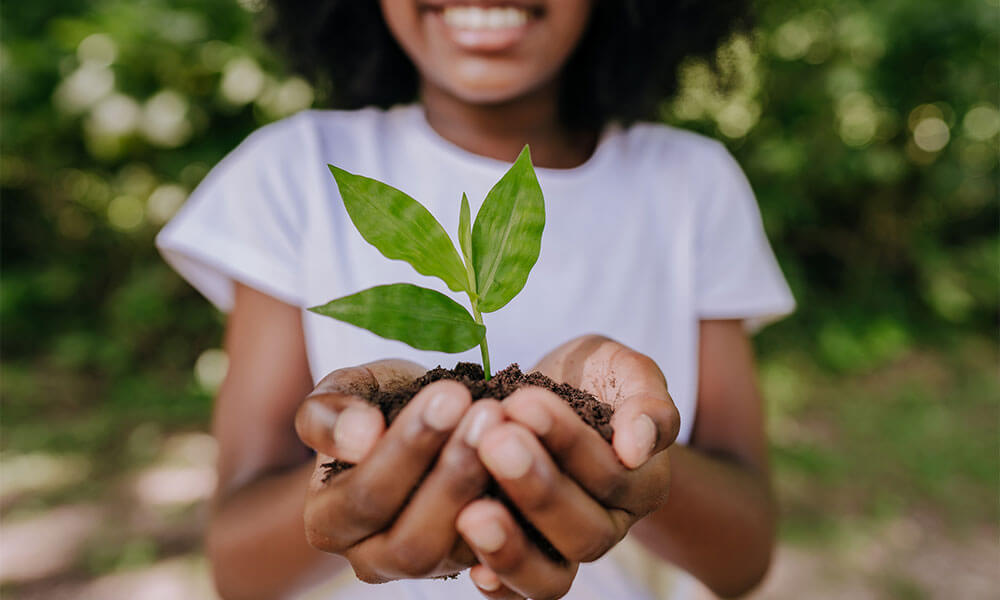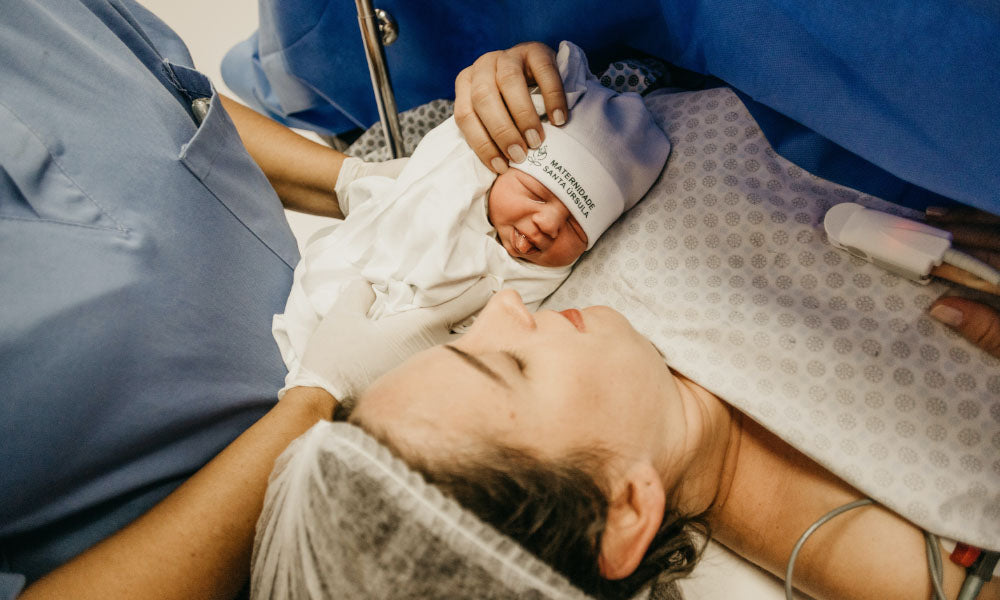Earth Day is right around the corner, but fostering a love for the environment and modeling how to care for our planet are things we can teach children year-round. Planting trees and flowers, beautifying a park, composting, and other such activities that focus on improving our Earth are all important to do, but can be big and messy undertakings. If you’re a busy parent looking for easy, dirt-free ways to celebrate our Earth with your child all year long, we at Kiddie Academy® have you covered.
1. Create artwork with recycled materials.
Spark your child’s creativity and get a conversation going around recycling. Start this activity by reading My Garden” by Kevin Henkes, which is a story about a girl who imagines extraordinary things growing in a pretend garden, like beach-ball sized tomatoes and flowers that change color. Have your child draw an imaginary garden using crayons or markers, or use recycled materials—like a cereal box, for example—to cut out flower shapes and glue them to old paper towel rolls to create a 3-D garden. No dirt needed!
2. Encourage hands-on exploration.
Tactical play is a fun way to experience the environment. Let your children pick up leaves on a walk, feel and smell them, and then sort them by size or type. Washing vegetables is another great way to expose your child to our environment through the textures and smells of produce. Gather vegetable scrubbers, colanders and a dish towel and fill up a large bowl or sink of water. Let your children scrub, rinse and dry the produce and then show them how it becomes a snack or part of a meal. Chat about how vegetables are grown in the dirt and how our Earth provides these healthy and delicious items for our use.
3. Take family bike rides and nature walks.
Strap on some helmets and hit the road for a family bike ride to enjoy some fresh air and natural beauty. Bonus points if you can bike to accomplish a nearby errand and lower your vehicle emissions in the process. If biking isn’t your speed, lace up your sneakers and set out on a nature walk. These activities present opportunities to slow down, talk about the Earth and point out ways to care for it. Talk about things you see as you go that have a good and bad impact on our environment and what can be done to help.
4. Donate gently used clothes and toys.
Combine spring cleaning with a discussion about reducing, reusing and recycling by choosing gently used clothes and toys to donate to a local shelter or charity instead of throwing them away. This activity shows children how we can help our neighbors and how we can prevent items from ending up in a landfill.
5. Decorate or design reusable cups, plates and bags.
Have your children help reduce waste by letting them pick out reusable cups, plates and bags to use and avoid using disposable paper and plastic products. Let your children choose a melamine plate, bowl
or cup with their favorite animals or characters on them. Your children will be excited to have dishes of their very own, and it will cut down on your family’s paper product waste. Then, grab some nontoxic fabric pens and let your children get to work on decorating canvas totes to use when your family goes to the grocery store.
6. Preserve or pickle fruits and veggies.
This project has the potential to be a little messy, but preserving and pickling fruits and vegetables is a great way to show your children how to avoid wasting food products. Before letting a carton of blueberries go bad, boil them with some sugar, water and lemon juice on the stove. Once cool, let your children help spoon out and seal the preserves in mason jars to be used later to top pancakes or toast and more. You can also head to your local farmer’s market or go on a farm tour to see where the food we eat comes from. Talk to your child about the importance of being responsible with the food we buy from the store or take from the ground.
7. Read books about the environment.
Reading positively reinforces things we tell our children through imagery and imagination. Therefore, books about the Earth, our environment and nature are essential when teaching children the importance of this topic. Here are some suggested books:
○ “Thank You, Earth: A Love Letter to Our Planet” by April Pulley Sayre
○ “10 Things I Can Do to Help My World” by Melanie Walsh
○ “Green” by Laura Vaccaro Seeger
○ “Kenya’s Art” by Linda Trice
○ “Miss Maple’s Seeds” by Eliza Wheeler
Talking to children about the environment and how we need to protect it through our actions is an important discussion to have as you do these activities. Use these opportunities to show children what they can do to help our planet and guide them in understanding the “why” by using familiar examples. Phrases like, “We should clean up litter to keep animals safe,” or “Let’s take our bikes to the park to keep the air we breathe clean,” can help connect the good action with the positive intent.
Immersing our children in the environment doesn’t have to be a messy experience. Even the smallest steps we take can have a beneficial impact on our children and our Earth.



